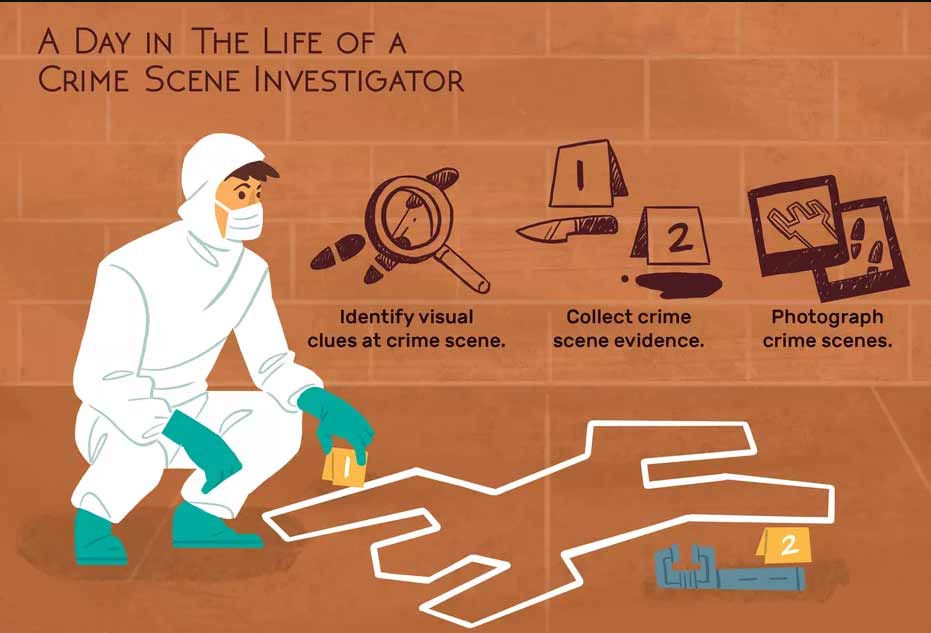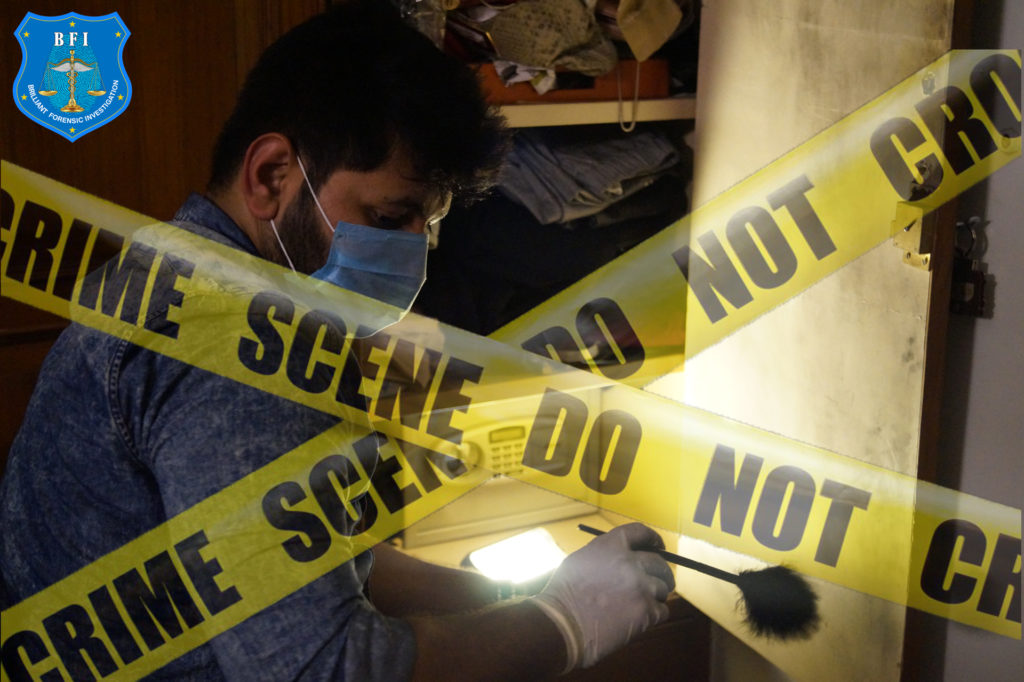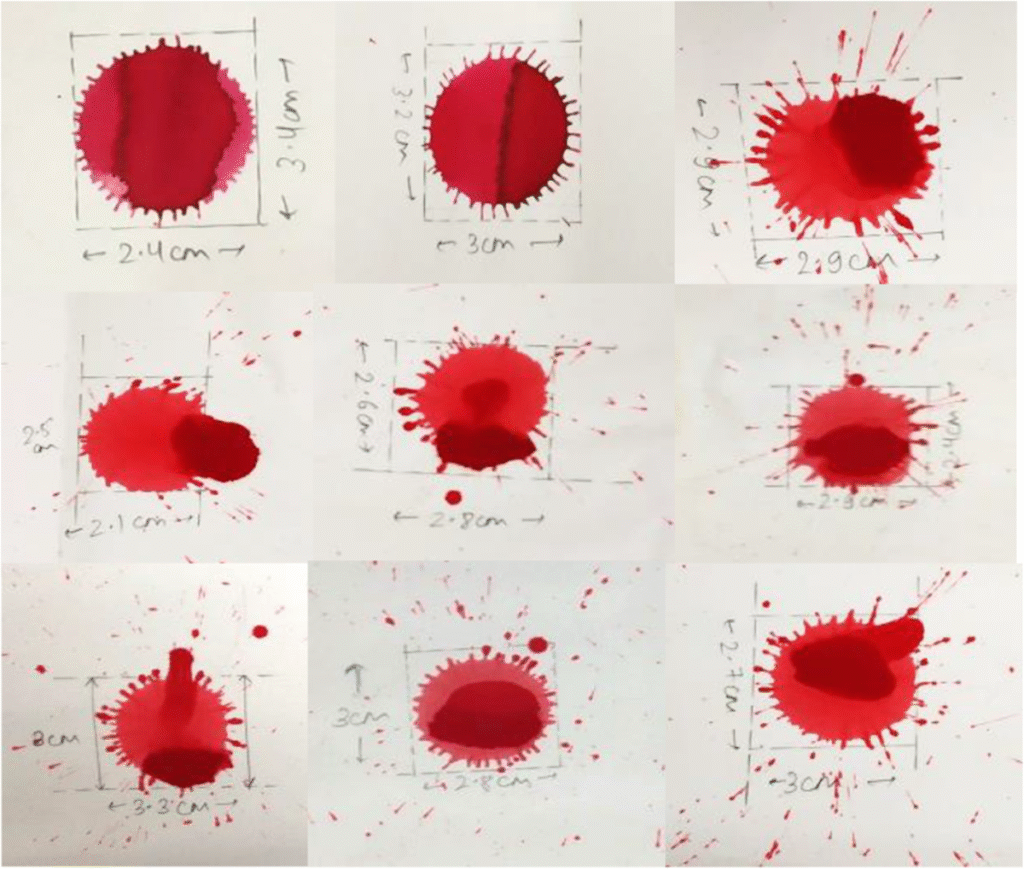
-
ceo.bfi@gmail.com
Send Email
-
2C, C-6/A Block, Janakpuri, Delhi India 110058
Visit Our Office
99902-92279
Confidentiality Guaranteed
99902-92279
Confidentiality Guaranteed

Feb
Crime Scene Investigation

Crime Scene Investigator | Crime Investigation
Scientific Methods for Solving Crimes with Precision and Evidence-Based Analysis
CRIME SCENE INVESTIGATION
Crime Scene Investigation (CSI) is one of the most critical components of modern crime investigation, helping law enforcement uncover the truth behind criminal events through systematic evidence collection and scientific analysis. It requires a combination of technical skill, discipline, and attention to detail to ensure that every clue is preserved accurately and used effectively in solving criminal cases.
At the heart of this discipline are trained forensic scientists who work alongside the police force to document the scene, collect physical evidence, and reconstruct the sequence of events. Their expertise and work experience allow them to interpret evidence that the untrained eye may overlook.
What Is Crime Scene Investigation?

Crime Scene Investigation involves the careful examination and documentation of scenes where illegal activities have occurred. This process includes:
Securing the scene
Recording the environment
Collecting physical and biological evidence
Preserving and analyzing materials
Reconstructing criminal actions
CSI forms the foundation for building a strong legal case and identifying suspects.
Key Steps in Crime Scene Investigation
1. Securing and Assessing the Scene
The first responders and the police force secure the crime scene to prevent contamination or loss of evidence. Investigators evaluate the surroundings, note initial observations, and plan the investigative approach.
2. Documentation and Photography
Every detail is photographed, sketched, and recorded. Attention to detail is crucial, as even minor inconsistencies can reveal major clues during analysis.
3. Evidence Collection
Specialized tools and scientific methods are used to recover:
Fingerprints, Footprints and tire marks, Weapons and toolmarks, Digital evidence,
Trace materials like fibers, soil, or glass
Body fluids such as blood, saliva, or semen
Proper handling ensures that evidence remains uncontaminated and admissible in court.
4. Ensuring Evidence Integrity
Investigators follow strict procedures to ensure that evidence is collected, labeled, packaged, and documented correctly. This maintains the chain of custody and preserves the scientific value of the material.
5. Laboratory Examination
Collected items are sent to the forensic science laboratory, where forensic scientists examine them using advanced technologies such as DNA profiling, chemical analysis, digital forensics, and ballistic comparisons.
6. Reconstruction and Reporting
Using scientific findings, investigators reconstruct the crime timeline, identify possible suspects, and generate detailed reports for legal proceedings.
The Role of Forensic Scientists in Crime Investigation
Forensic scientists play a critical role in analyzing evidence once it leaves the crime scene. Their work includes:
Identifying body fluids and biological materials
Matching fingerprints or DNA profiles
Analyzing weapons, bullets, and tool marks
Interpreting digital data
Providing professional opinions based on work experience
Serving as expert witnesses in court
Their scientific insight helps uncover how the crime occurred and who was involved.
Why Crime Scene Investigation Matters
Ensures accurate identification of suspects
Protects innocent individuals from false accusations
Strengthens legal cases with scientific evidence
Helps reconstruct the sequence of events
Provides closure to victims and families
Supports the justice system with reliable investigative methods
Effective crime scene investigation bridges the gap between the police force, forensic experts, and the judicial system.
The Importance of Bloodstain Pattern Analysis in Crime Scene Investigation

Bloodstain pattern analysis (BPA) is a crucial aspect of crime scene investigation that can provide valuable insights into the dynamics of a crime. By examining the size, shape, distribution, and other characteristics of bloodstains, forensic experts can reconstruct events and determine key details such as the type of weapon used, the number of perpetrators, and the sequence of events. In this blog post, we’ll explore the importance of bloodstain pattern analysis and its role in solving crimes.
Understanding Bloodstain Patterns
Bloodstains can take various forms depending on factors such as the angle of impact, the velocity of the blood, and the surface onto which it is deposited. Spatter patterns, for example, are created when blood is forcefully ejected from a wound and travels through the air, resulting in characteristic spatters on nearby surfaces. Transfer stains occur when an object with blood on it comes into contact with another surface, leaving behind a recognizable impression. Understanding these patterns and their significance is essential for forensic investigators.
Identifying Key Evidence
Bloodstain pattern analysis can also help identify key evidence that may have been overlooked or concealed. Hidden bloodstains, for instance, may be revealed through techniques such as luminol testing, which causes blood to fluoresce under certain lighting conditions. By uncovering hidden bloodstains or patterns, investigators can gather additional evidence to strengthen their case and refute alibis or false statements.
Case Study
To illustrate the importance of bloodstain pattern analysis, let’s consider a hypothetical case involving a violent altercation in a residential home. By examining the bloodstains present at the scene, forensic investigators were able to determine that the victim was attacked while standing near a window, resulting in arterial spurts that sprayed onto the nearby wall. The presence of high-velocity impact spatter indicated the use of a sharp-edged weapon, such as a knife. By reconstructing the sequence of events based on bloodstain patterns, investigators were able to identify the perpetrator and build a compelling case against them.
Conclusion
In conclusion, bloodstain pattern analysis is a powerful tool in the arsenal of forensic investigators, enabling them to reconstruct crime scenes, identify key evidence, and ultimately bring perpetrators to justice. By understanding the dynamics of bloodstain patterns and their significance, investigators can uncover vital clues that may have otherwise gone unnoticed. As technology and techniques continue to advance, bloodstain pattern analysis will remain a cornerstone of modern crime scene investigation.
This blog post provides an overview of the importance of bloodstain pattern analysis in crime scene investigation, along with a case study to illustrate its practical application. Subsequent posts could delve into other aspects of forensic science, such as fingerprint analysis, DNA profiling, or digital forensics, to provide readers with a comprehensive understanding of the field.
Call To Action

Are you interested in learning more about forensic expert or seeking professional forensic-expert services? Contact us today to inquire about our expertise.
📞 Contact Us: 9990292279
🌐 Visit Our Website: https://forensicexpertinvestigation.com/
✉️ Email: ceo.bfi@gmail.com




